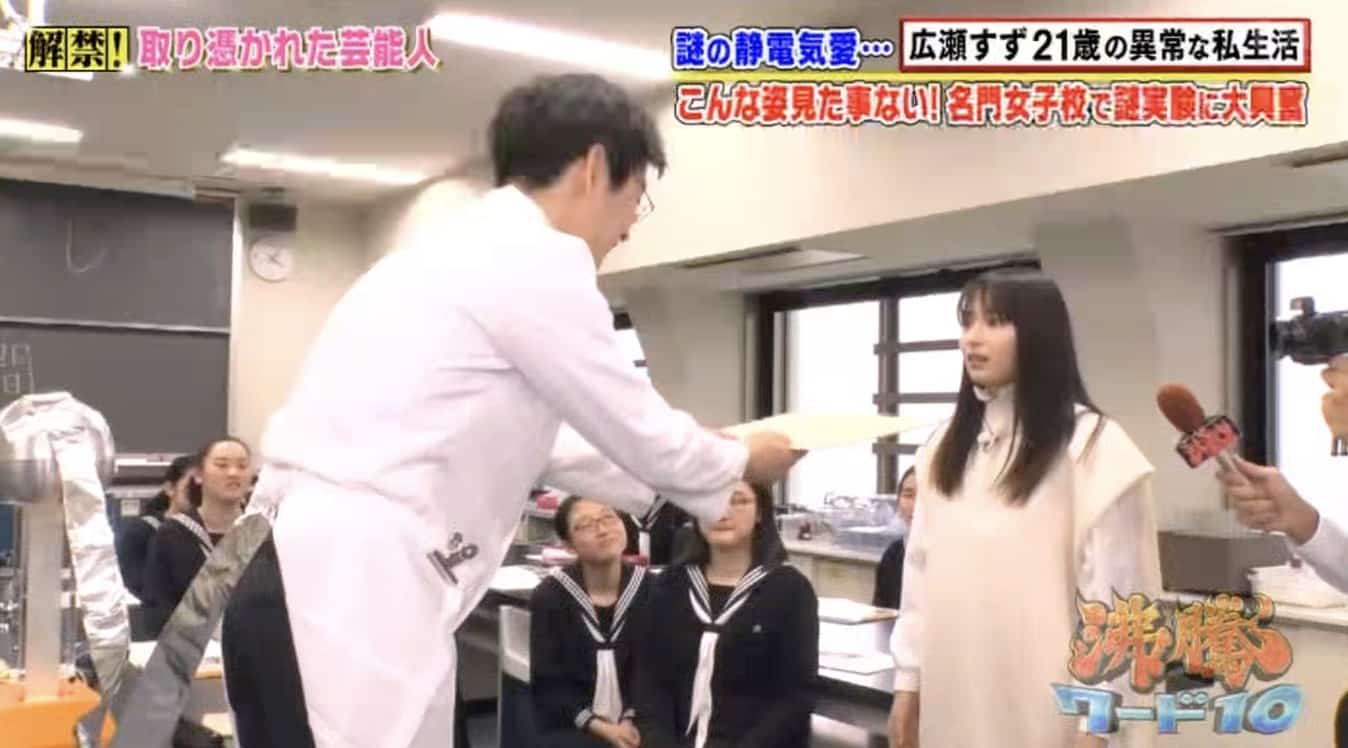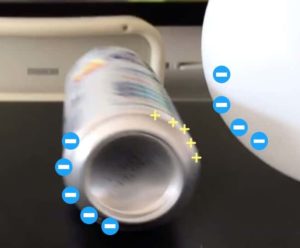Catchy Title Suggestion: The Pocket Superpower: Unlocking the Secret of Static Attraction
I’m Ken Kuwako, a Science Trainer. Every Day is an Experiment!
Attracting a light object with a gentle whoosh, without even touching it… It sounds like a superpower straight out of a sci-fi movie, but it’s actually the mysterious force of static electricity, a phenomenon you’re already familiar with. That crackling sound when you pull off a sweater in the winter, or the classic trick of a balloon making your hair stand on end—these are all examples. Today, we’re going to uncover the secret of how this everyday electricity becomes a “magic power” that attracts objects!
A Grand Migration in the Micro World! What Exactly is Static Electricity?
Static electricity is generated when objects rub against each other. Everything around us is made of tiny particles called “atoms,” which contain both positive charges and negative charges (electrons). When two objects are rubbed, electrons “move house” from one material to the other.
Crucially, some materials are “electron donors” (easily release electrons) while others are “electron acceptors” (easily accept them). The order that shows this tendency is called the Triboelectric Series.
Reference: The Triboelectric Series
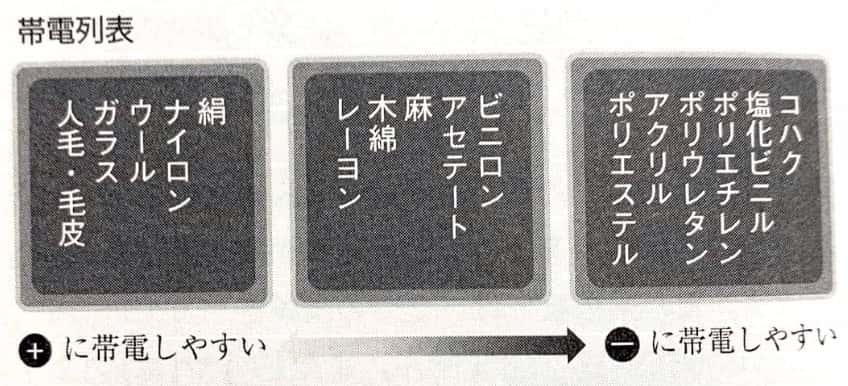
From my book, Science Certification Official Workbook Grades 5 & 6 (Kodansha)
For example, when you rub a rubber balloon with a tissue or cloth, the Triboelectric Series dictates that electrons move from the cloth to the balloon. As a result, the balloon, which gained many electrons, becomes negatively charged, while the cloth, which lost electrons, becomes positively charged.
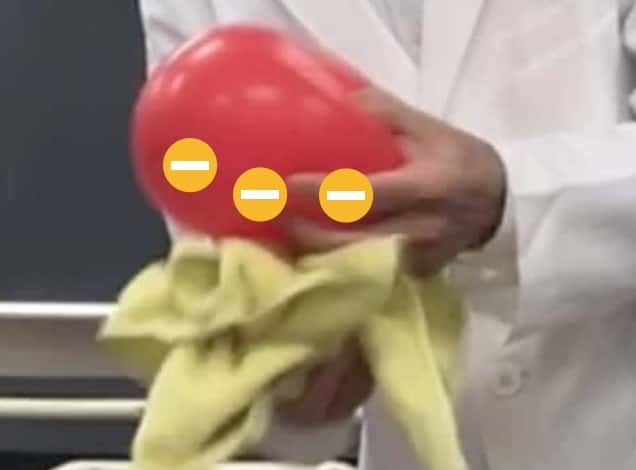
Time to Experiment! Controlling Styrofoam with Static
Now, let’s bring our negatively charged balloon close to a piece of Styrofoam, which is electrically neutral (neither positive nor negative).
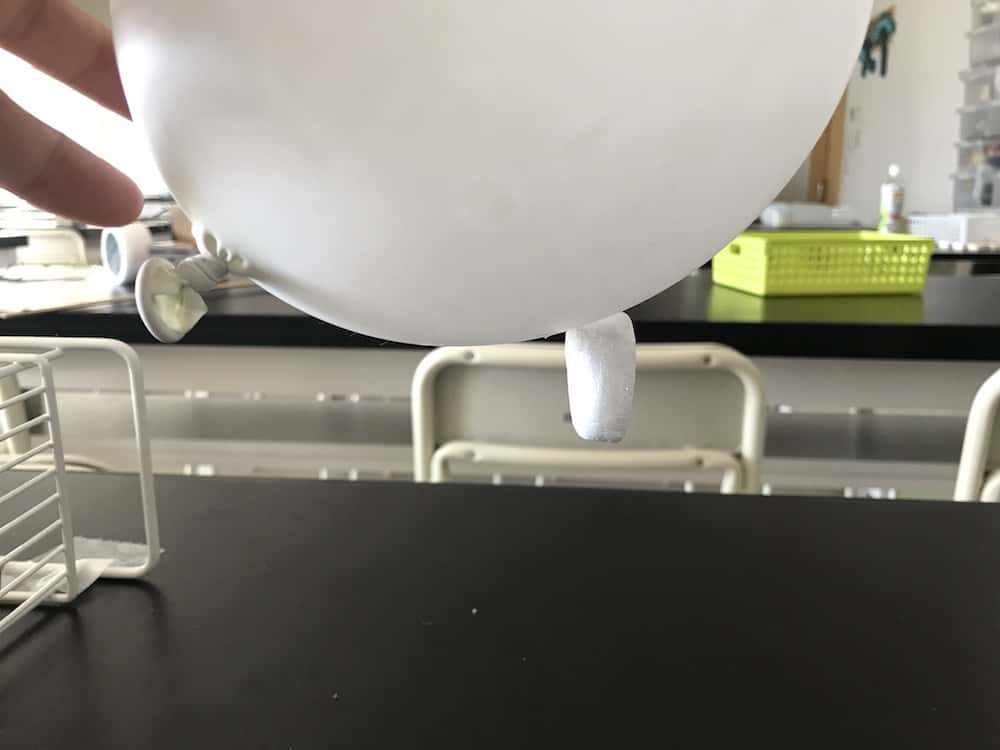
As you can see, it sticks perfectly!
But here’s a curious riddle. What if we bring the cloth, which should be positively charged (since it lost electrons to the balloon), close to the Styrofoam? Look—it also sticks!
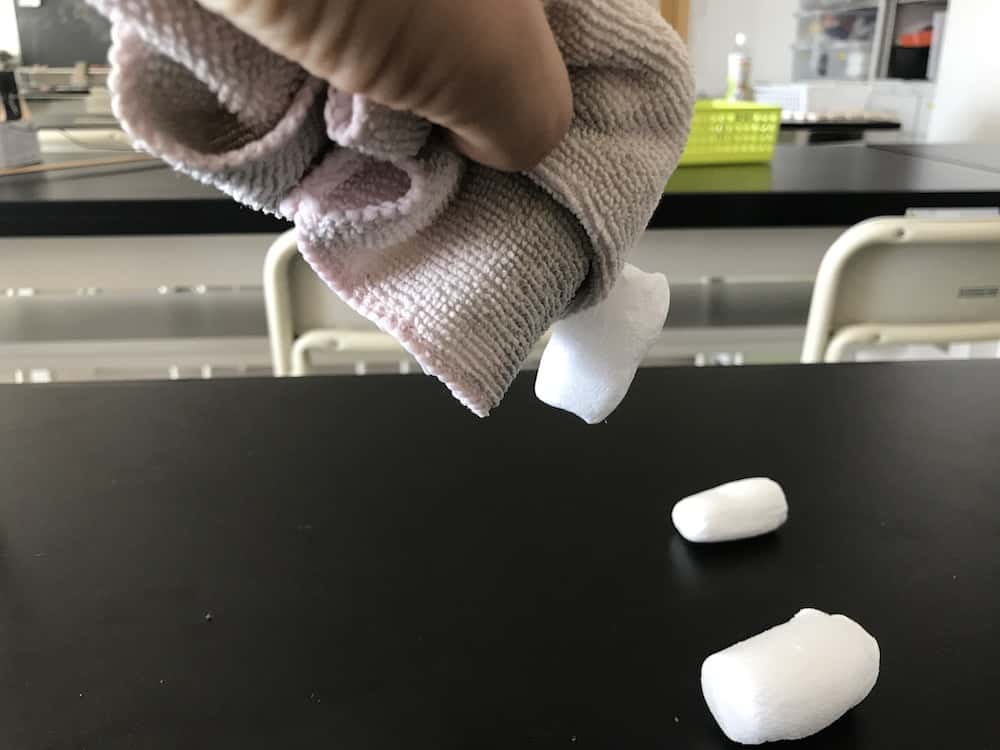
Isn’t that strange? Why is it that both the negative balloon and the positive cloth attract the same neutral object?
The Key to the Mystery is “Dielectric Polarization”!
The secret to this phenomenon is a process called Dielectric Polarization. Even in electrically neutral Styrofoam, the atoms contain both positive and negative charges. Normally, these charges are randomly oriented and perfectly balanced.
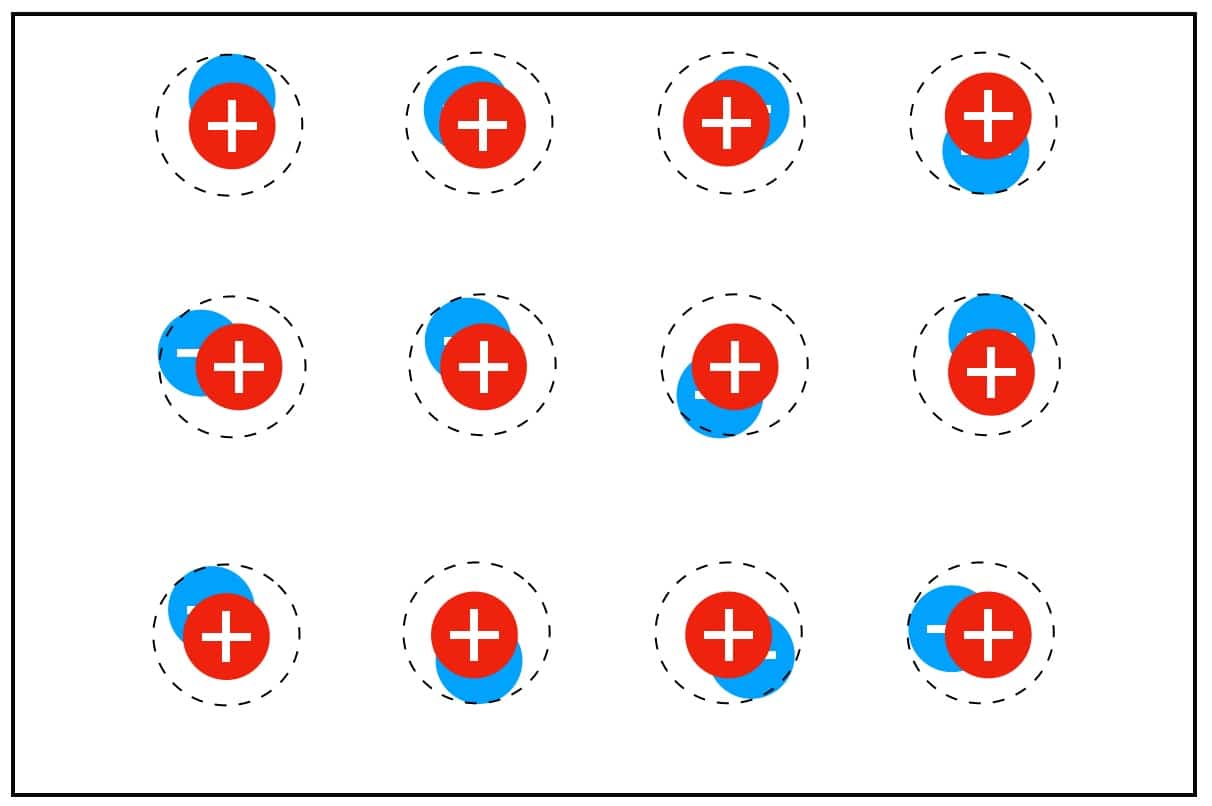
What happens when you bring the negatively charged balloon close? The negative charges (electrons) inside the Styrofoam are repelled by the balloon’s negative charge, getting pushed toward the side furthest from the balloon. As a result, the side closer to the balloon becomes relatively positive!
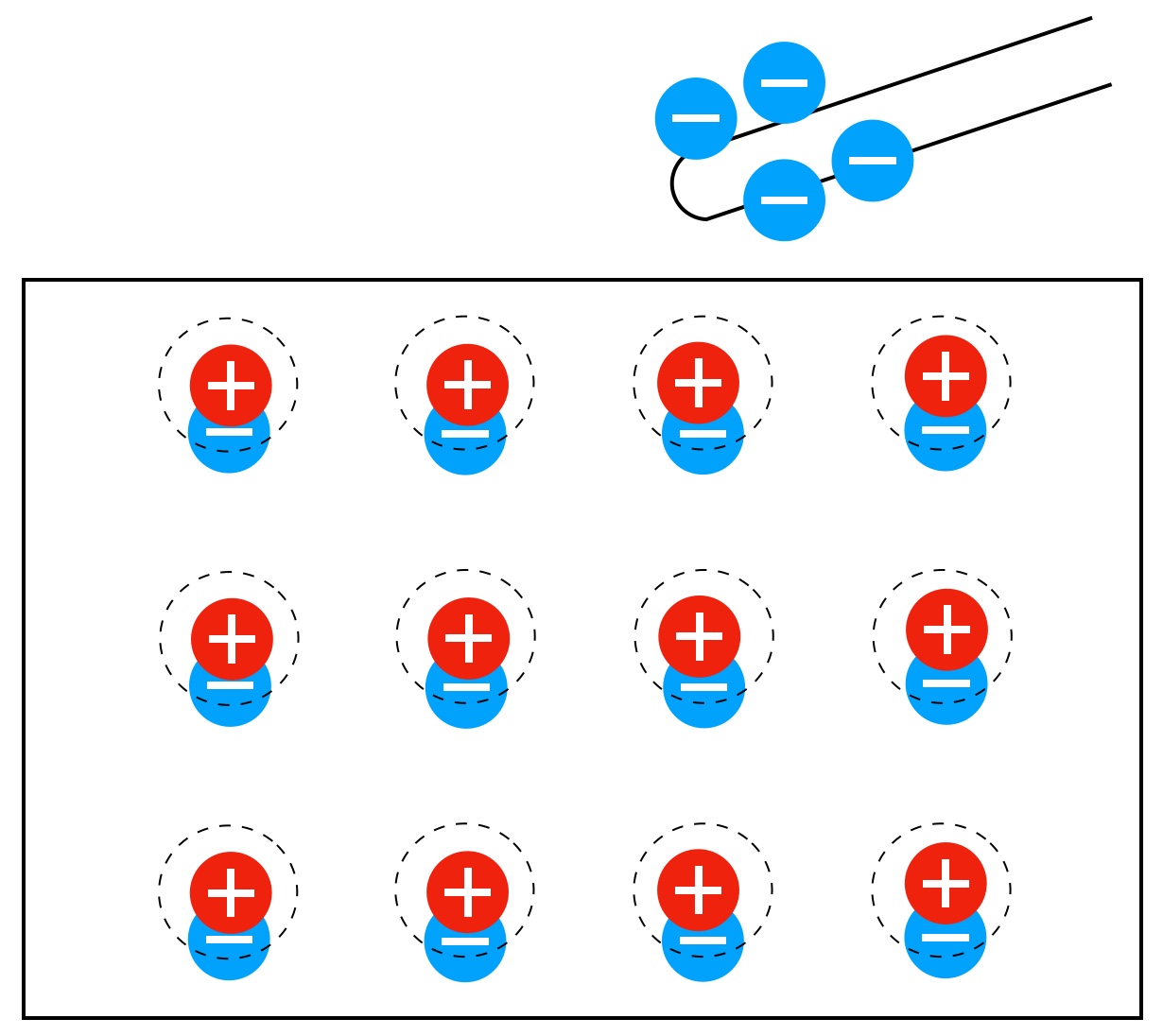
The balloon’s “negative” charge attracts the Styrofoam’s surface “positive” charge, making them stick. Conversely, if you bring the positive cloth close, the electrons in the Styrofoam are attracted, making the side closest to the cloth negative, and the two still attract! In short, Dielectric Polarization is the amazing force that can align the internal charges of a non-conductive material, ensuring attraction regardless of whether the external object is positive or negative!
Trash Starts Dancing!? Creating Art with Paper Scraps
You can use this power to do even more interesting things. Things you might consider trash, like shredded paper from a school shredder or finely cut origami scraps, can be transformed into fantastic experiment tools!
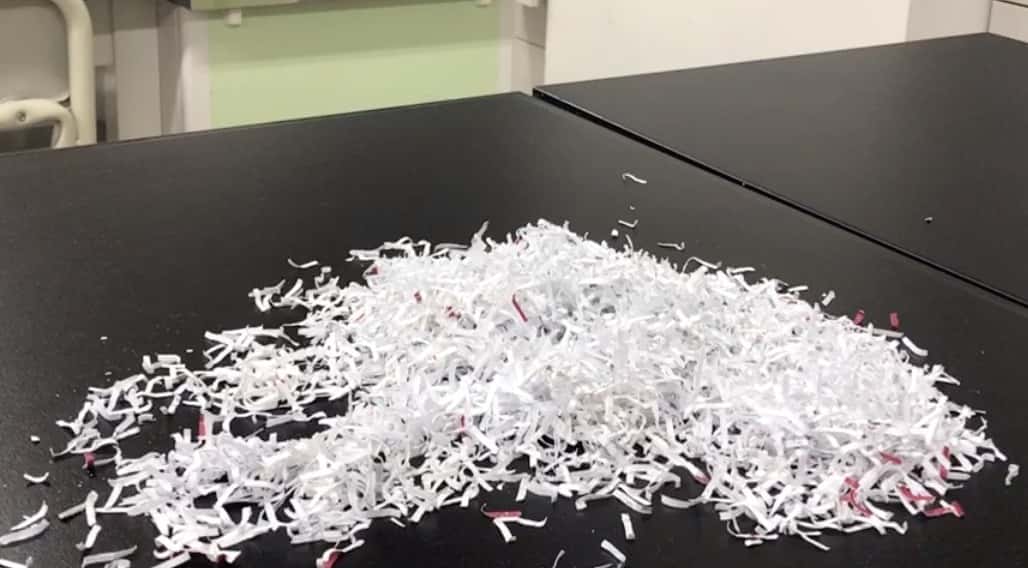
Let’s bring a charged balloon close. Watch the video below to see what happens:
What did you think? The paper scraps rustle and stand up, getting pulled toward the balloon as if they were alive. Can you see how the scraps, after sticking, are standing straight up in a radiating pattern? This is evidence that they are aligning themselves along the invisible lines of electrical force, called Electric Field Lines. It’s like a work of art created by static electricity!

By the way, if you bring a magnet close to the same spot, the paper scraps do not react at all. This shows you, in an instant, that the force of electricity and the force of magnetism are different!
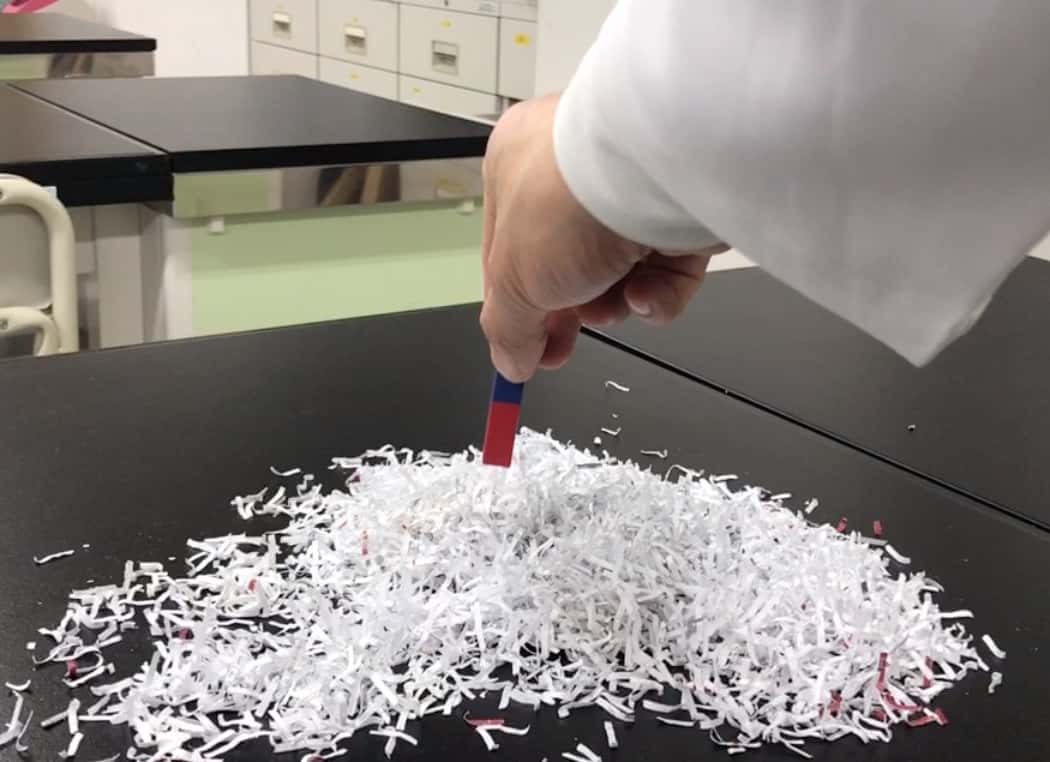
This phenomenon is endlessly fascinating, even when you know how it works. Be sure to try it at home!
【Advanced】Epic Experiments with a Static Electricity Machine!
Beyond these simple experiments, you can use a Van de Graaff generator (a static electricity machine) for even more dynamic demonstrations, like making hair stand straight up or objects floating in the air. Some of these experiments have been featured on TV with celebrities like Suzu Hirose, Ryohei Suzuki, and Chocolate Planet. For more details, check out this feature page!
【Feature】Static Electricity Experiments You Won’t Be Able to Stop Doing!
Please note: Experiments using a static electricity generator (Van de Graaff) are extremely dangerous. They must always be conducted under the supervision of an expert. For requests regarding static electricity experiments (experiment classes, TV supervision/appearances, etc.), please contact us here.
Inquiries and Requests
Let’s make the wonders and fun of science more accessible! I’ve put together easy-to-understand tips and fun science experiments you can do at home. Feel free to search around!
・The content of the Science Idea Notebook is now a book. Details here
・About the administrator, Ken Kuwako: click here
・For various requests (writing, lectures, experiment classes, TV supervision/appearances, etc.): click here
・Article updates are posted on X!
![]() Experimental videos are streaming on the Science Channel!
Experimental videos are streaming on the Science Channel!

